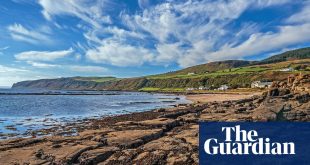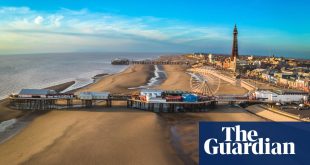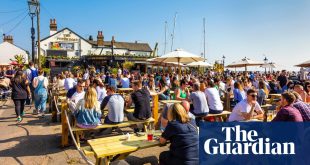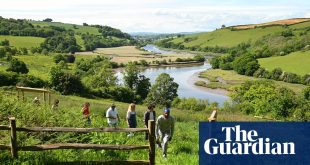At Walton on the Essex coast a group of ragged people with empty, staring eyes are standing just above the tide line, their feet tangled in seaweed. They have come ashore on the tip of the Naze peninsula, a low finger of land where, in 1720, a stone tower was built to warn mariners. They hold their tattered cloaks around themselves and seem to be waiting. Are they ghostly survivors of yet another village swallowed by the rising sea? Won’t anyone help them?
Future prophecy or simply a commemoration of the drowned village nine miles offshore, Nabil Ali’s powerful The Sea People sculpture greets us as we walk around this fascinating headland. After 200 miles (of the planned total of 500) walking the English coast, we have left Suffolk behind, gone deep into Essex and begun to understand why Beach of Dreams, this curious and idiosyncratic arts project that we’re on, is perfect for our times.
People are joining us for a few miles, sometimes a whole day or more, others just attach themselves, but they all want to talk and hear each other’s stories. In the last 18 months everyone’s life seems to have been irrevocably altered: bereavements, job changes, and house moves are plentiful. At Wrabness Angela tells me that she’s moved house and changed to home working. “I’ll never go back. All that time spent commuting. Never again.” Another walker chimes in, “No more wasting money on clothes and lunches!”
Sometimes the walk feels like a state-of-the-nation investigation. At Harwich, Chris tells me how his building project in Peterborough is delayed by pandemic-induced shortages. “Amazon use the same paper for packaging that is used to back plasterboard. Now we can’t get plasterboard.” Ironically, pre-pandemic, he had worked on the construction of Amazon’s largest warehouse. One significant change, common to everyone who joins us, is that they have started walking more. Footpaths around towns and villages are being used again, sometimes for the first time in many years. One walker, Christine, tells me how she stopped using her car to get to walks and instead went straight from the door. In the process she discovered two lovely lakes near her house that she hadn’t known about.
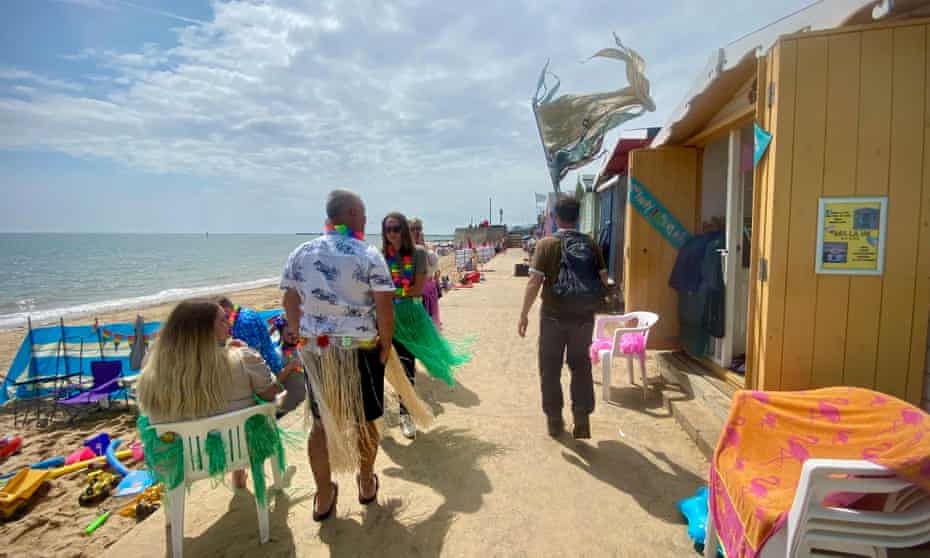
This discovery of local paths can come with unpleasant surprises. People find their way overgrown and inexplicably blocked. The coastal path we are following occasionally gives up and heads inland. Landowners deter ramblers with loose dogs, barbed wire and, most commonly, signs: “Private Road” is a favourite, often ignoring the fact that there is a public right of way. The beach is a major battleground, and I hear many complaints of high-handed annexation by the wealthy and well connected. Fortunately you can usually walk between the high and low water marks as it is crown land. Frequently we have come across courageous locals with secateurs and clippers, clearing their own footpaths.
Harwich has been a surprise. The old town is a real beauty, its streets lined with wonderful colourful houses and the postbox has a crocheted cover adorned with sea creatures. We all agree that the Alma is the best pub yet; it stands opposite the former house of Christopher Jones, who was captain of the Mayflower that sailed to the new world in 1620. Further on is the Electric Palace cinema, built in 1911 and one of Britain’s first, one of a select few that still show films.
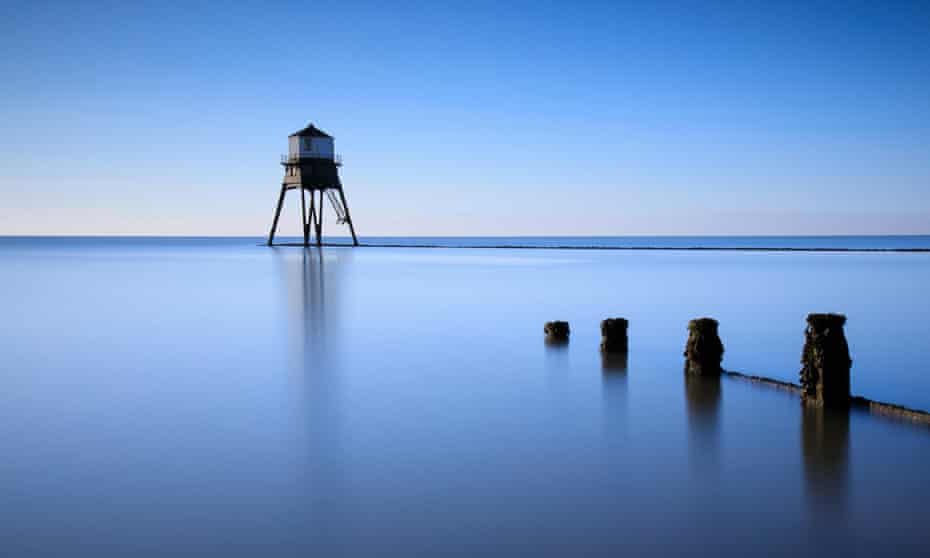
On this walk there always seems to be someone with key knowledge: this time it’s Laura, who works at the Electric Palace, telling me the tragic tale of William Friese-Greene, motion picture pioneer who lived on nearby Cliff Road for many years. Despite designing new cameras and an early system of colour, he was only credited after he died. (He’s buried in London’s Highgate Cemetery.)
On the outskirts, Marion, a walker from Suffolk, asks local hikers where the site of Warners Dovercourt Holiday Camp was. When it’s pointed out, she tells an emotional tale of how her great-aunt brought her here as a child to explain how she had escaped from Nazi Germany. Marion’s parents had also escaped but would never speak of it. Now she learned that her great-aunt had also helped bring out Jewish children and many came here (the newly built camp was turned into a military base during the war), living in simple beach cabins that were chilly in winter. Local people rallied round with hot-water bottles. Most of the parents of those children were murdered in the Holocaust.
Another walker has another memory. The camp reverted to a holiday resort after the war, where, as a teenager in the early 1970s, she had a Saturday job. “I can remember my first pay packet. I went out and bought a record.” She laughs, “I’m afraid it was Chirpy Chirpy Cheep Cheep by Middle of the Road.” As if this isn’t embarrassing enough, it turns out that the camp had become the location for the television series Hi-de-Hi!, and many of her friends became extras on set throughout the 1980s. The entire camp was razed before anyone at the BBC could commission a revival.
We move on. The coast is decorated with sea lavender, samphire and valerian. Curlews mew like lost kittens and oystercatchers clack. The pink elmleaf blackberry flowers are dancing with tiny orange butterflies. This coast is endlessly changing. Fallen trees lie in the water, their roots worn away. In one spot builders are throwing up what looks like a replica of the White House, even as the soft earthy cliff is creeping closer.
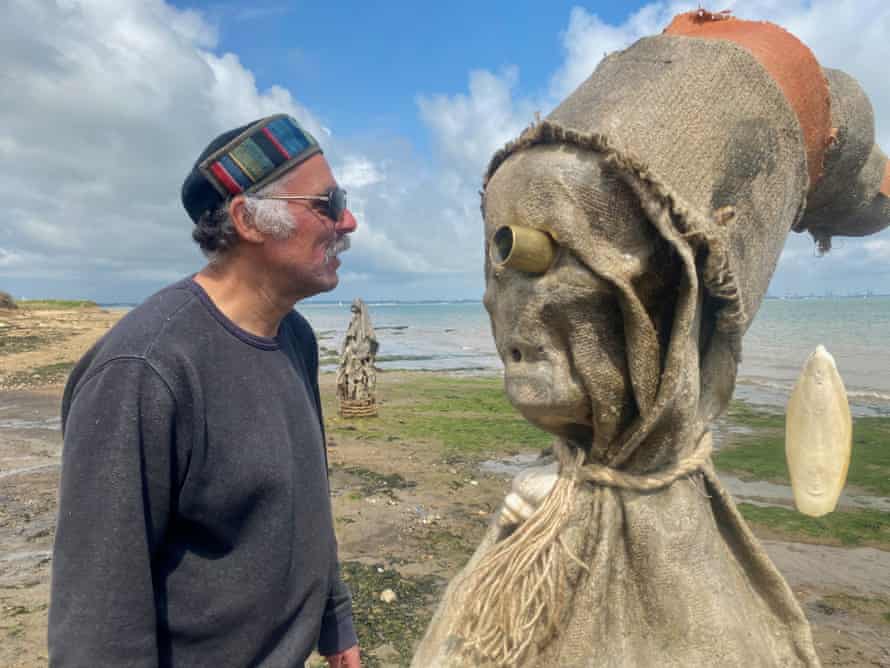
The Naze peninsula at Walton is itself retreating by about two metres a year and there, next to that evocative group of figures, we meet the artist, Nabil Ali. He explains how he made casts of a 14th-century skull then modelled figures on willow forms using traditional plasters mixed from wax, beach clay and powdered sea shells. The eyes were cut from anti-aircraft shell casings.
 Top Naija News – Nigeria News, Nigerian News & Top Stories Top Naija News – Nigerian Newspapers, Nigerian News. topnaijanews is a daily Nigerian newspaper covering Latest News, Breaking News, Entertainment, Sports, Lifestyle and Politics.
Top Naija News – Nigeria News, Nigerian News & Top Stories Top Naija News – Nigerian Newspapers, Nigerian News. topnaijanews is a daily Nigerian newspaper covering Latest News, Breaking News, Entertainment, Sports, Lifestyle and Politics.
